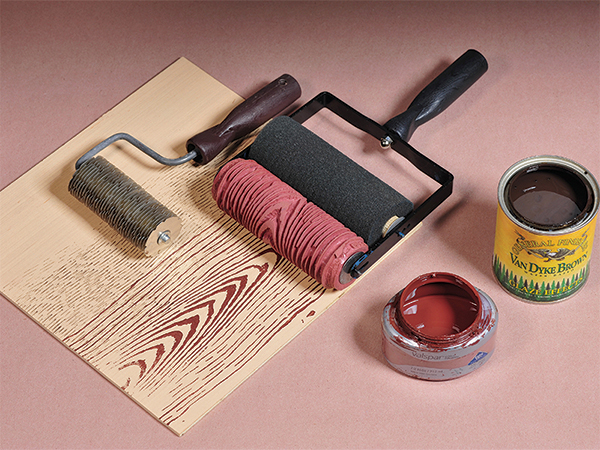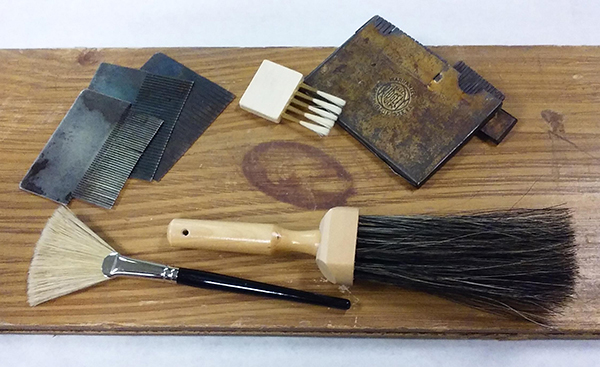
I own a home that’s around 200 years old. The cabinets on each side of the fireplace were painted over, so I removed the paint. Below the paint, the original pattern is of a darker stain that looks like a fan. When I stripped the paint, some of the fan design went with it. I am curious how it was done so I can try to restore it to the original design. The fans appear to alternate facing left and right and they are about 3 inches in width from the narrow to the “open” fan end. Any ideas as to what the pioneers used to make this design as a design would be most helpful! – Jean Murphy
Tim Inman: Graining and painting techniques are as varied as the artists who do the work. Technically known as “faux bois” when the goal is to mimic specific wood grains, the practice is as old as the pyramids. Part of the fun of being a restorer is the “Sherlock Holmes” factor. What did they do? How did they do it? What did they do it with? Without seeing your project, my guess is that the tools were local and common. Bird feathers were/are commonly used to do graining. A goose feather is best. It has a natural resistance to oils, and usually they are quite stiff and durable. It could also have been a rag wrapped around a stick. Or finger painting! I’d need to see this one to give a better answer.
Below is an example of faux bois on a pine board in which I created a knot and a strong wood grain pattern on a clear pine board using a variety of graining combs, veining brushes and glazes. Unfortunately, I don’t have a quick example of wood graining using a goose feather. But, it’s the best tool to make the “ripple grain” effects often seen in crotch cut mahogany.

Chris Marshall: Michael Dresdner covered a variety of decorative roll-on finishing techniques, including one for faux graining (top photo) in his “Finishing Thoughts” article for our April 2018 print issue. As Tim suggests, there are any number of ways to make wood grain appear where it wasn’t before! While a roller like this won’t reproduce the fan pattern you’re after, it’s an interesting option for other applications.





